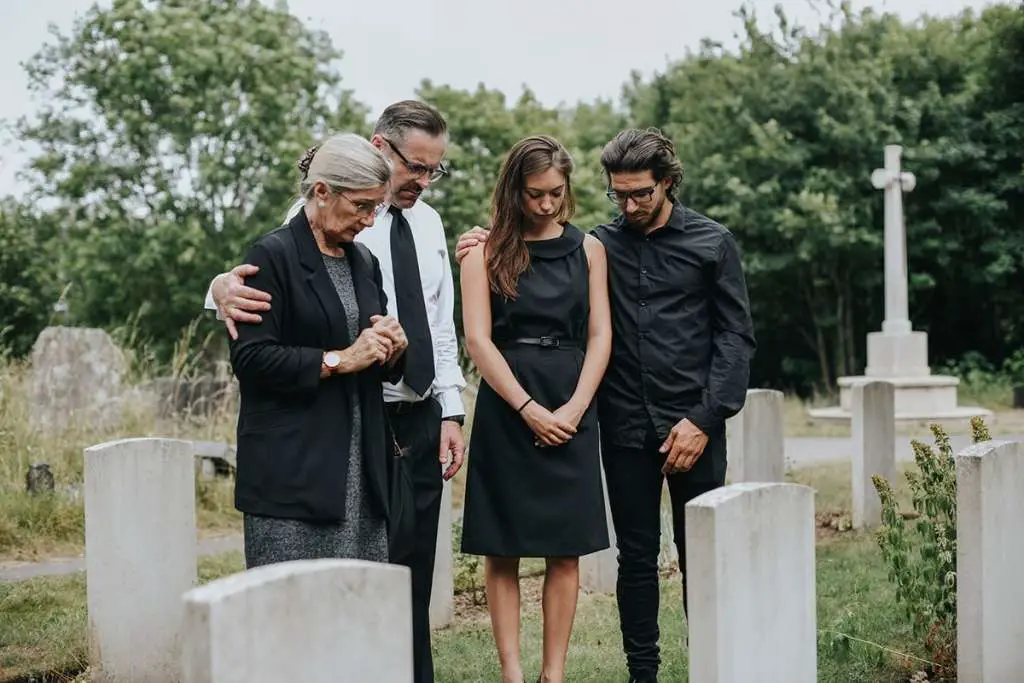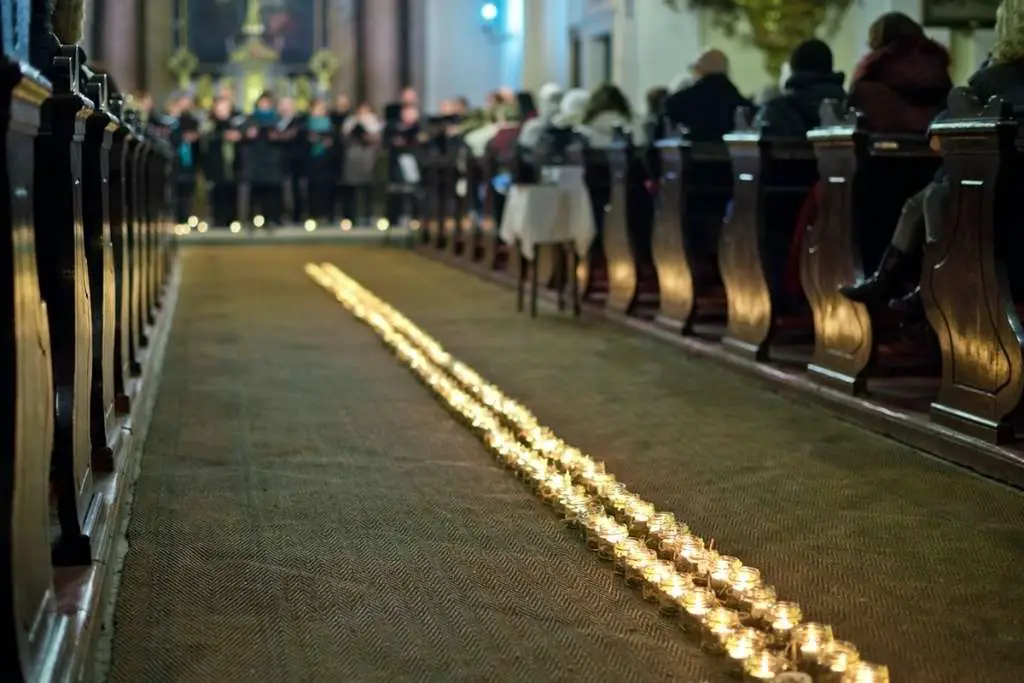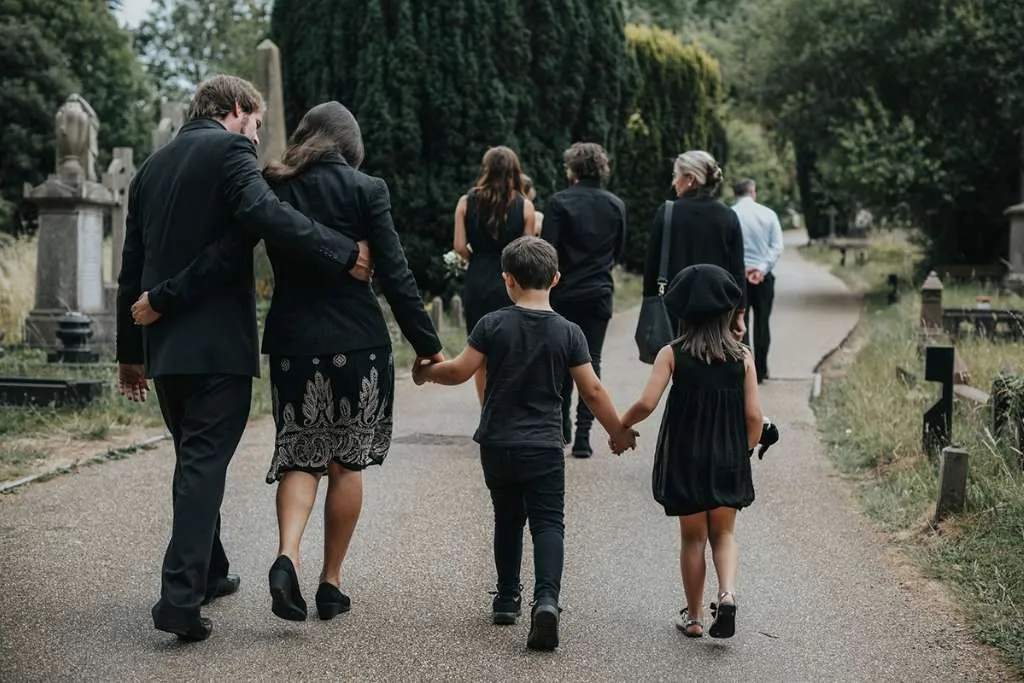If you’ve been invited to attend a Catholic funeral, and you didn’t grow up in that religion, then you’re probably feeling a bit out of the loop regarding the dress code. Normally, the families of the deceased do not specify what you need to wear, but there are some standard options that are typically suggested for Catholic funerals.
You should wear black, semi-formal clothing to a Catholic funeral. It is a somber occasion, and your clothing should mirror that. Men should wear a black suit and tie or sports coat and tie. Women should wear a modest, black skirt, dress, or pantsuit; they may choose to wear a hat.
In the rest of this article, I will go into more specific details about what you should be wearing to a Catholic funeral, including what colors you should definitely not wear and how to make a dress appropriate for a Catholic funeral. I will also discuss some of the common Catholic funeral practices so that you can be prepared for anything you might experience.
What Colors Can You Wear to a Catholic Funeral?
It is recommended that you wear black to a Catholic funeral as it reflects the serious nature of the occasion. However, if black is not available to you, dark grey and navy blue are also considered appropriate options.

Black is considered the traditional funeral going color for many cultures and religions, and the Catholic church is no exception to this rule. If you go to a Catholic funeral mass, you’ll see that nearly everyone is wearing black.
However, if you don’t have an appropriate black outfit, don’t despair. Both dark grey and deep navy blue are considered appropriate colors. The main thing to think about here is what emotion the color is communicating. A funeral is a time for mourning, not celebration, so make sure your clothing reflects that.
In the Catholic church, more than in other denominations, color has significance. The Catholic church has a total of six different liturgical seasons, each of which is represented by a different color. Some of these colors include:
- Green
- Red
- Purple
- Rose
If you choose to wear any of these colors to a Catholic funeral it would be considered disrespectful because you’re representing a season of life (green) or celebration (red) during a time meant for mourning.
Along with this, it is also recommended that you do not wear patterns. A simple black and white floral would be okay, but anything too festive could also be considered disrespectful. The same goes for men, if you are going to wear a tie, make sure it matches the color of your outfit, be it black, grey, or navy, and keep the pattern simple.
How Modest Do My Clothes Need To Be?
Depending on the culture, what is considered appropriate for a Catholic funeral will vary. Some cultures are a lot more conservative, while others are okay with more skin being shown. However, there are still some general guidelines that you can use.
Generally speaking, everything from the shoulders to the knees should be covered. It is recommended that you stick to long sleeves. If you choose to wear short sleeves, you should bring a shawl, jacket, or cardigan to use during the service. You should also steer away from any sheer fabrics.
For men, pants are a must; shorts are not appropriate for a Catholic funeral. They should also be wearing a long-sleeved dress shirt at the very minimum, preferably with a suit or sports jacket over top of it.
For women, the rules are usually a little more strict. They are expected to wear a skirt or dress that falls below the knee and a top that fully covers their shoulders. It is recommended that you wear long sleeves and, if you decide to wear short sleeves, you should bring a shawl or something that can be used to cover your arms during the actual funeral mass.
It was once mandatory that Catholic women cover their heads with a hat or a veil during mass, but that is no longer the case. However, it is still an option and many cultures still participate in head covering.
If you aren’t sure whether or not you should be wearing a head covering, the best thing you can do is ask the deceased’s family what their customs are. In contrast, men should never wear a hat or head covering in the church as it is considered disrespectful.
What Are Typical Catholic Funeral Practices?
A Catholic funeral typically takes place in the context of a funeral mass. Within this service, the priest will bless the coffin and give a homily, also known as a sermon, about the deceased’s life. The family receives communion, the mass will conclude, and they will process to the burial grounds.

If you are invited to a Catholic funeral, but are not Catholic, there is no reason to be concerned. Although there are some things that you cannot participate in unless you are a baptized Catholic, such as receiving communion, non-Catholics are welcome at any and every Catholic service.
At the start of the service, the priest will process up the aisle along with the coffin. Once the coffin has been placed, he will begin to say mass. During the course of the mass, the priest will bless the casket and say a homily that often includes stories about the deceased during their lifetime.
After the mass concludes, they will process back down the aisle and leave the church. At this point, the coffin will be taken to the cemetery, and the family will follow behind in their cars.
If you donned additional clothing to enter the church, you may remove it at this point for the actual burial.
Conclusion
When attending a Catholic funeral, it is important to dress plainly and in a somber fashion. Black is the most popular color to wear, but other dark colors such as dark grey will also work. Men should wear a suit and tie or at the very least a sports jacket and dress pants.
It is recommended that women wear a dress or skirt that covers them from the neck to the knees, although a nice pantsuit is also acceptable. Remember that these are just guidelines, and every family will have different wishes for their loved one’s funeral.
What To Read Next:






